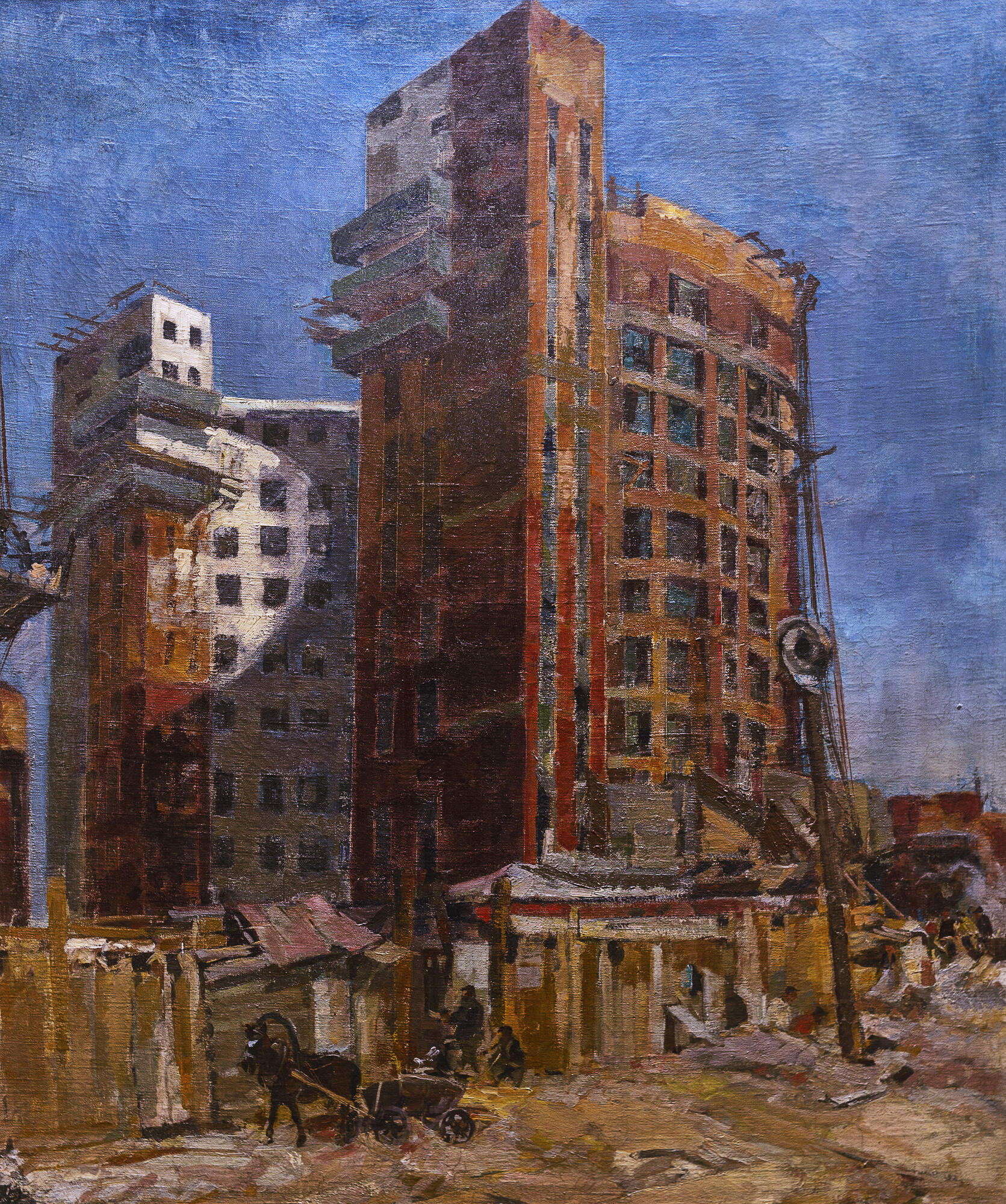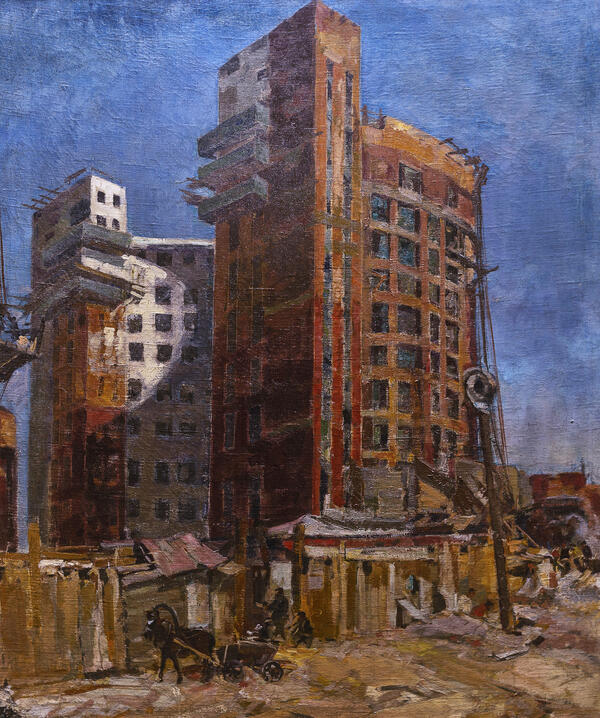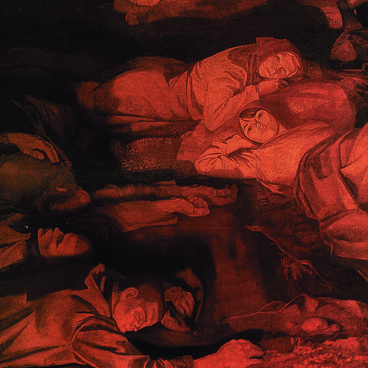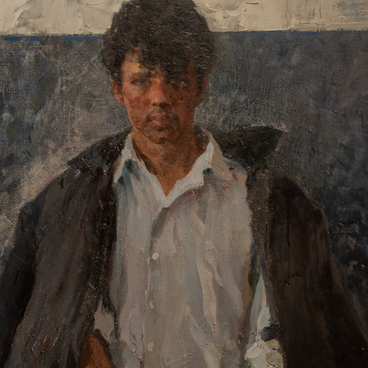Painters, who came to Sverdlovsk in the early 1930s, saw the city as a big construction site: new neighborhoods and districts were springing up, while workers were rebuilding the central streets and constructing multistory apartment buildings.
The architects of this project turned to the newest art movement — constructivism. The term comes from the Latin word “construction”, which means “construction”. The basic principle of the trend is that the form of an object should correspond to its purpose.
Constructivist architects designed buildings according to the principles of the new movement, trying to make the layout efficient, comfortable and as minimalistic as possible. They used new materials, such as reinforced concrete and glass, and preferred to have construction details produced at factories so that the buildings would all look standard. Constructivist architecture is distinct for its clear geometries, straight and sharp angles, numerous windows and terraces in combination with plain facades and semicircular surfaces. The architects also duly addressed the problems of mass settlement and the transition from the usual Soviet routine to a new, communal type of life.
With this painting, the Moscow artist Vasily Kraynev managed to document a truly historical event — the building of the “Chekists” Village’ in Sverdlovsk. This city block was intended for the secluded life of the NKVD officers. Its construction was conducted from 1929 to 1936 under the supervision of the architects Antonov, Sokolov and Tumbasov. They designed the block according to the principles of constructivism.
The block was bordered by four streets — Lenina, Pervomayskaya, Lunacharskogo, and Kuznechnaya — and included 14 apartment and administrative buildings. The concept of collectivization was curiously reflected in the design of the apartments: it was believed that the new Soviet people rejected the old way of life, so it was arranged for everyone to eat together and go to public baths, and then there was no need for bathrooms or kitchens in the houses at all. However, the former House of Culture housed a large canteen which all the residents could frequent. Its menu was announced over an internal broadcasting system. To get to the canteen, one was supposed to take a special covered passageway and then a spiral staircase.
Around 1932, Vasily Kraynev depicted the construction of the central building of the entire complex — a semicircular 11-story Hotel Iset. At that time, it was the highest building in the city.
The painting ‘Building the Chekists’ Village’ provides some understanding of how the genre of the new urban landscape with its special emphasis placed on changing the architectural appearance of cities was formed. Kraynev arranged the composition by contrasting the old prehistoric Yekaterinburg buildings and the new rapidly growing architecture of Sverdlovsk. The painter performed the picture in broad and free brush strokes, and its sketch manner creates a pleasant feeling of capturing a fleeting moment as if from a live broadcast of the event.
The architects of this project turned to the newest art movement — constructivism. The term comes from the Latin word “construction”, which means “construction”. The basic principle of the trend is that the form of an object should correspond to its purpose.
Constructivist architects designed buildings according to the principles of the new movement, trying to make the layout efficient, comfortable and as minimalistic as possible. They used new materials, such as reinforced concrete and glass, and preferred to have construction details produced at factories so that the buildings would all look standard. Constructivist architecture is distinct for its clear geometries, straight and sharp angles, numerous windows and terraces in combination with plain facades and semicircular surfaces. The architects also duly addressed the problems of mass settlement and the transition from the usual Soviet routine to a new, communal type of life.
With this painting, the Moscow artist Vasily Kraynev managed to document a truly historical event — the building of the “Chekists” Village’ in Sverdlovsk. This city block was intended for the secluded life of the NKVD officers. Its construction was conducted from 1929 to 1936 under the supervision of the architects Antonov, Sokolov and Tumbasov. They designed the block according to the principles of constructivism.
The block was bordered by four streets — Lenina, Pervomayskaya, Lunacharskogo, and Kuznechnaya — and included 14 apartment and administrative buildings. The concept of collectivization was curiously reflected in the design of the apartments: it was believed that the new Soviet people rejected the old way of life, so it was arranged for everyone to eat together and go to public baths, and then there was no need for bathrooms or kitchens in the houses at all. However, the former House of Culture housed a large canteen which all the residents could frequent. Its menu was announced over an internal broadcasting system. To get to the canteen, one was supposed to take a special covered passageway and then a spiral staircase.
Around 1932, Vasily Kraynev depicted the construction of the central building of the entire complex — a semicircular 11-story Hotel Iset. At that time, it was the highest building in the city.
The painting ‘Building the Chekists’ Village’ provides some understanding of how the genre of the new urban landscape with its special emphasis placed on changing the architectural appearance of cities was formed. Kraynev arranged the composition by contrasting the old prehistoric Yekaterinburg buildings and the new rapidly growing architecture of Sverdlovsk. The painter performed the picture in broad and free brush strokes, and its sketch manner creates a pleasant feeling of capturing a fleeting moment as if from a live broadcast of the event.



